Traditional watercraft are lagging behind in efficiency and eco-friendliness, struggling to meet the demands of modern maritime travel.
Imagine the drag, the noise, the fuel consumption – it’s not just about speed; it’s about the impact on our oceans, the inefficiency, and the outdated experience.
Enter Hydrofoil Boats! Cutting-edge technology meets sustainability in these innovative vessels. Glide over water with unparalleled speed, minimal environmental impact, and a silent, smooth ride that redefines maritime transport.
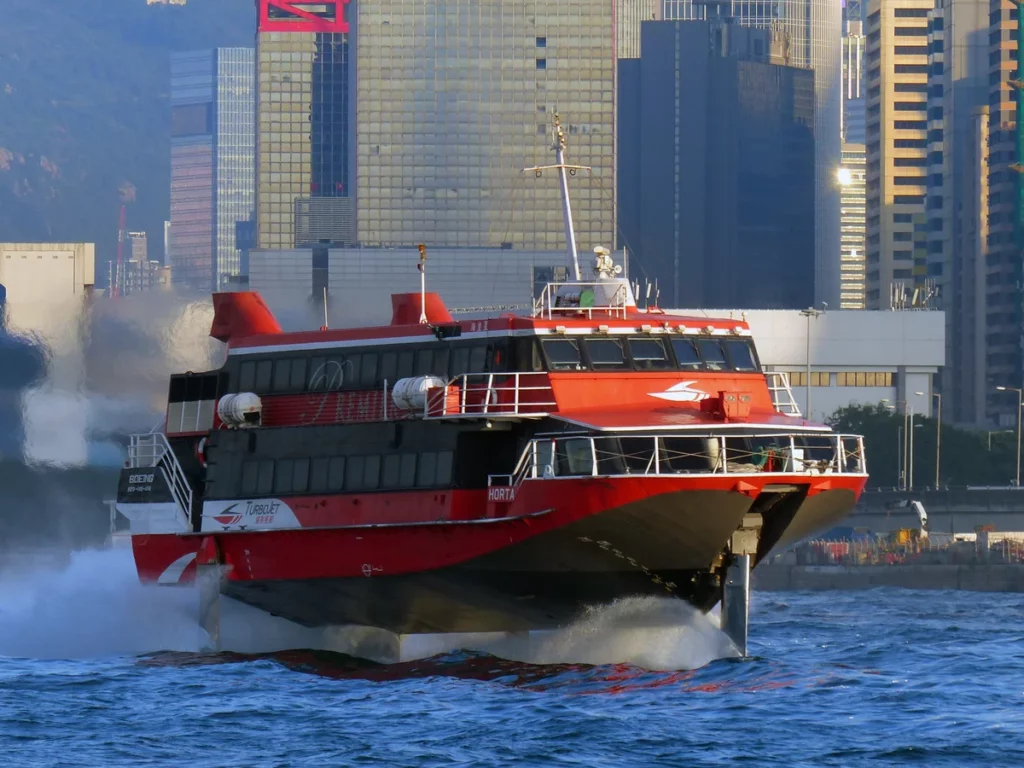
Despite the fact that the foiling technology has been present for more than a century, hydrofoil boats have recently gained popularity among boat enthusiasts. Superyachts, racing boats, ferries, and many other types of watercraft have all used hydrofoil technology to increase their speed and efficiency.
A hydrofoil is a wing-like structure that supports a boat which produces lift as the boat’s speed rises. Lowering drag and keeping the boat above the waves, helps the boat travel quicker and more smoothly.
Given that hydrofoil boats are currently in the news once more, it is time to discuss what they are, how they operate, their benefits and drawbacks, and a serious assessment of whether or not they represent the future of boating. We’ll cover everything there is to know about hydrofoils in this article.
The History of Hydrofoils
Casey Baldwin, Enrico Forlanini, and Alexander Graham Bell—the same person who created the telephone—developed the hydrofoil technology first. By 1909, Forlanini had an operational prototype on Italy’s Lake Maggiore. The German and US Navy used the hydrofoil boat to travel through waters that were heavily mined during WWII.
The hydrofoil technology was applied to water sports in the 1960s, 1970s, and 1980s, where it was employed in kiteboards, surfboards, and air chairs. When racing teams utilized it to break speed and time records in world sailing competitions in the 2010s, it caught consumers’ attention once more. Most lately, boat manufacturers have been experimenting with the use of hydrofoils on smaller boats using outboard and propelled engines.
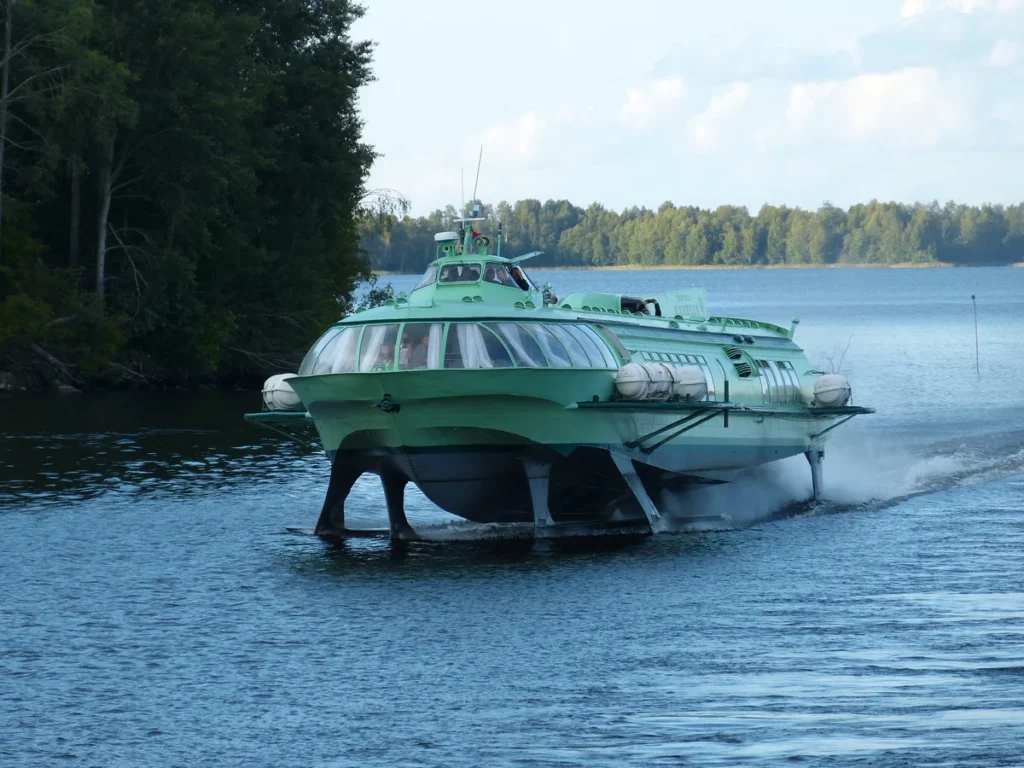
The Working Principle Of Hydrofoil Boats
A “hydrofoil” is a structure made of a wing (V), T, or U form that supports a hydrofoil boat. Surface-piercing and fully submerged hydrofoil boats are the two different varieties. The boat is raised off the water’s surface at high speeds using both varieties of hydrofoils.
When moving quickly enough, the lift from the foils is sufficient to lift the boat’s whole hull clear of the water, leaving just the foils themselves in contact with the surface. This offers amazing advantages in speed, effectiveness, and experience, all of which we will discuss soon.
Aero foils used on airplanes achieve similar results as hydrofoils in terms of reducing drag and increasing speed.
Like other power boats, hydrofoil boats are primarily propelled by propellers or water jets. Having said that, hydrofoil boats are also quite well-liked in sailing. However, using hydrofoils on sailboats requires a lot of technical skill and is primarily employed by racing teams. Commercial boats utilize them the most frequently, but lately, leisure boats are introducing them to the general public.
We are aware that hydrofoils reduce drag and allow boats to travel at higher speeds, but how does that actually work? As hydrofoil boats are essential “a boat with wings,” is the best way to describe them. When a hydrofoil boat picks up speed, it too lifts off the water, just like an airplane would do.
Large ships and ferries can frequently be lifted from the surface by their entire hulls, even while the foils themselves are immersed in the water. Being in a hydrofoil boat has a similar sensation to being in a plane with restricted airspace. It moves quickly and smoothly.
Hydrofoils require additional technology at the consumer level. Hydrofoils can have costly price tags, as we’ll discuss later. As you might expect, there are considerable safety risks associated with a boat that literally “wings” through the air.
An automatic control system that maintains flying height, foil pitch and rides smoothness is necessary for hydrofoils. This “autopilot” technology prevents the boat from smashing back into the water after it has been lifted from the surface by allowing the foil to move safely in and out of the water.
Environmental Impact and Sustainability of Hydrofoil Boats
The emergence of hydrofoil boats, particularly electric hydrofoils, marks a significant stride toward more sustainable watercraft technologies. Their environmental impact is a critical aspect of their appeal, offering a greener alternative to traditional boats.
Reducing Carbon Footprint
- Electric Propulsion: The switch from fuel-based to electric propulsion systems in hydrofoil boats greatly reduces emissions. Electric hydrofoils emit zero direct greenhouse gases, significantly cutting down the carbon footprint associated with maritime activities.
- Energy Efficiency: Hydrofoils are designed to lift the hull out of the water, drastically reducing drag and thus, energy consumption. This efficiency is a cornerstone in their sustainable design, allowing for longer ranges while consuming less power.
Noise Pollution and Marine Life
- Silent Operation: Unlike conventional boats, electric hydrofoils operate silently. This reduction in noise pollution is crucial for the well-being of marine life, which can be severely disrupted by the loud engines of traditional boats.
- Minimal Water Disruption: The unique design of hydrofoils minimizes their wake and reduces water turbulence. This has a lesser impact on marine ecosystems compared to standard hull designs, which can cause more substantial water disturbances.
Sustainable Materials and Manufacturing
- Eco-friendly Materials: Innovations in hydrofoil construction include the use of sustainable materials. Manufacturers are increasingly adopting recyclable composites and eco-friendly resins, contributing to a reduced environmental footprint in the production phase.
- Lifecycle Impact: The long-term sustainability of hydrofoils also hinges on their lifecycle impact. From manufacturing to end-of-life disposal, efforts are being made to ensure that every stage is as environmentally friendly as possible.
Challenges and Future Directions
- Battery Technology: One of the main challenges in electric hydrofoils is the development of more efficient and eco-friendly battery technology. Advancements in this area will be pivotal in enhancing the sustainability of hydrofoil boats.
- Renewable Energy Integration: Integrating renewable energy sources, such as solar panels, could further elevate the eco-credentials of hydrofoil boats, making them a truly green mode of maritime transport.
Innovative Designs and Latest Models in Hydrofoil Boats
The hydrofoil market is witnessing a surge in innovative designs and cutting-edge models, redefining the boundaries of maritime technology. This section delves into the latest trends and groundbreaking models that are shaping the future of hydrofoil boats.
Emerging Trends in Hydrofoil Design
- Aerodynamic Efficiency: Modern hydrofoils are embracing sleek, aerodynamic designs that not only enhance speed but also improve energy efficiency. These designs reduce drag and optimize lift, crucial for electric hydrofoils where battery life is a key factor.
- Modular Construction: Some of the latest hydrofoils feature modular designs, allowing for customization and adaptability to different use cases, from leisure cruising to high-speed transport.
- Smart Technology Integration: Advanced navigation systems, IoT connectivity, and automated control systems are becoming standard features in new hydrofoil models. This integration of smart technology enhances safety, performance, and user experience.
Notable Models Making Waves
- Navier 27: As a frontrunner in the electric hydrofoil sector, the Navier 27 stands out for its range and efficiency. It’s America’s first fully electric hydrofoil, offering a silent, emission-free experience without compromising on speed or luxury.
- Candela C-8: Hailing from Sweden, the Candela C-8 is celebrated for its blend of performance and sustainability. It’s equipped with a groundbreaking hydrofoil system that delivers a smooth ride with significantly reduced energy consumption.
- SEAir Flying RIB: The SEAir Flying RIB is a testament to versatility in hydrofoil design. This model can be used both as a leisure craft and for professional purposes, showcasing a robust design that can handle various sea conditions.
Focusing on User Experience
- Comfort and Stability: One of the key focus areas in recent hydrofoil designs is the enhancement of passenger comfort. Hydrofoils, by design, offer a smoother ride by gliding over the water’s surface, reducing motion sickness and discomfort.
- Ease of Operation: User-friendly interfaces and simplified control systems are being prioritized to make hydrofoil boats more accessible to a broader range of users, from maritime professionals to boating enthusiasts.
Sustainability Meets Luxury
- Eco-Luxury Models: Several high-end hydrofoil models are merging luxury with eco-friendliness. These boats offer premium amenities while adhering to sustainable practices, appealing to a market that values both comfort and environmental responsibility.
What Are The Pros And Cons Of Hydrofoil Boats?
The main benefits of Hydrofoils are listed below,
· Speed: This is not shocking. The majority of hydrofoils, whether they are used in sailboats, ferries, or other commercial vessels, can “fly” at speeds considerably above 50 knots (60 mph).
· Comfort: Because the boat’s hull is off the water, most waves and wakes barely affect it, leaving passengers with little to no noticeable discomfort. It is a smooth ride as a result.
· Stabilization: The boat’s stability is improved because comfort is increased (at high speeds). The hydrofoils slice across the water, lowering the watercraft’s motion index.
· Efficiency: Hydrofoils travel significantly more quickly to their destination since they aren’t affected by tiny waves and wakes that would slow most boats down. This efficiency encourages a significantly greater fuel economy for boats with conventional propellers or jet engines.
· Experience: Boating is like no other activity because of the reduced drag and wave impact. You really do feel as though you are “flying” just over the water’s surface.
The main drawbacks of Hydrofoils are found to be,
· When compared to operating a typical runabout boat, operating a hydrofoil is far more technical and demands a much more sophisticated skill set.
· Hydrofoils are only appropriate for open water or huge lakes (as of now). They are NOT appropriate for shallow water because any bottom impacts while moving could be fatal for both the passengers and the boat.
· Range of Speeds: Hydrofoils can only “fly” at particular speeds. Every boat will have a preferred speed range in which to operate. Due to the fact that the hull and foils are immersed in the water, anything below that range will result in increased drag. Anything above the range becomes hazardous and out of control.
· Costs of maintenance: Sophisticated technology requires complex maintenance and storage.
· They aren’t cheap overall. Consumer-level boats that are more in demand might cost upwards of $300,000.
Consumer Accessibility and Market Trends
The hydrofoil boat market is evolving rapidly, with consumer accessibility and market trends shifting in response to technological advancements and changing demands.
Availability and Market Expansion
- Growing Market Presence: Hydrofoil boats are becoming increasingly available worldwide, with manufacturers expanding their reach to cater to a global audience.
- Diverse Range for Different Budgets: The market now offers a range of hydrofoil boats, from luxury models to more affordable options, making them accessible to a broader consumer base.
Pricing Dynamics
- Premium Pricing for Advanced Models: High-end hydrofoil boats, especially those with advanced technology and luxury features, come with a premium price tag. However, this cost is often justified by their superior performance and lower operational expenses.
- Cost-Efficiency in the Long Run: Despite the initial higher investment, hydrofoil boats can be more cost-effective in the long run due to lower fuel consumption and maintenance costs.
Consumer Trends and Preferences
- Sustainability as a Key Factor: Environmental consciousness is driving consumer preferences, with more buyers opting for eco-friendly models like electric hydrofoils.
- Adaptability and Usage: Consumers are also looking for versatility in use – from leisure and tourism to practical applications like commuting.
Hydrofoil Boats in Competitive Sports and Racing
Hydrofoil boats are making a significant impact in the world of competitive sports and racing, known for their speed and efficiency.
Racing Circuits and Competitions
- High-Speed Competitions: Hydrofoil boats are becoming a mainstay in high-speed racing competitions, thrilling audiences with their exceptional speed and maneuverability.
- Innovations in Racing Models: Racing hydrofoils are continually being refined for better performance, with tweaks in design for maximum speed and agility.
Popularizing in Sports
- Growing Interest: The excitement and challenge of hydrofoil racing are attracting more participants and spectators, contributing to its growing popularity in the sports world.
- Training and Skill Development: As the sport grows, so does the availability of training programs and facilities for aspiring hydrofoil racers.
Technological Advancements in Hydrofoil Control Systems
The safety and performance of hydrofoil boats are heavily reliant on their control systems, and recent technological advancements have been transformative.
Innovations in Control Technology
- Automated Control Systems: Advanced hydrofoils are equipped with automated control systems that adjust the foils for optimal performance and stability in varying conditions.
- Integration with AI and Machine Learning: Some hydrofoils are now utilizing AI and machine learning algorithms to enhance navigation and operational efficiency.
Safety Enhancements
- Advanced Safety Features: Modern hydrofoils come with enhanced safety features, including collision avoidance systems and improved emergency response mechanisms.
- Reliable Performance in Diverse Conditions: Enhanced control systems allow hydrofoils to operate safely in a wider range of weather and sea conditions.
Comparative Analysis: Hydrofoil Boats vs. Traditional Boats
Comparing hydrofoil boats with traditional boats reveals distinct differences in performance, cost, and usage.
Performance Comparison
- Speed and Efficiency: Hydrofoil boats generally offer higher speeds and better fuel efficiency due to reduced drag.
- Stability and Comfort: The design of hydrofoils provides a smoother ride, especially in choppy waters, enhancing comfort and reducing motion sickness.
Cost Analysis
- Initial Investment: Hydrofoil boats typically require a higher initial investment compared to traditional boats.
- Operational Costs: Over time, the operational costs of hydrofoils can be lower due to their efficient fuel usage and lower maintenance requirements.
Usage Scenarios
- Versatility: Hydrofoils are versatile in their application, suitable for everything from leisure cruising to professional racing.
- Environmental Impact: Hydrofoils, especially electric models, have a significantly lower environmental impact, making them a more sustainable choice.
Will Hydrofoils Revolutionize The Boating Industry?
It’s difficult to predict whether or not hydrofoils will become more widely used among consumers. Hydrofoil boats are currently merely pleasant toys for the privileged. Before you see them on your local river, manufacturers still have a few operational challenges to solve.
Hydrofoils are only suitable for huge lakes or wide seas due to their vulnerability to damage in shallow water. Although they are not yet as prevalent as your typical jet boat, hydrofoils are becoming more and more well-liked. You shouldn’t be shocked if you start to see more of them if the nearby water is a huge lake or wide ocean.
Future Prospects: Hydrofoil Technology in Maritime Transport
The application of hydrofoil technology in maritime transport is poised for transformative growth, offering potential solutions to some of the industry’s most pressing challenges.
Expanding Beyond Recreational Use
- Commercial Transportation: Hydrofoils are being eyed for commercial transportation, including passenger ferries and cargo vessels. Their speed and efficiency could revolutionize how goods and people move across water.
- Tourism and Leisure Industry: In the tourism sector, hydrofoils offer an attractive option for high-speed sightseeing tours and luxury travel, combining speed with comfort.
Large-Scale Environmental Benefits
- Reducing Maritime Emissions: With the maritime industry increasingly focused on reducing its carbon footprint, hydrofoils, particularly electric models, present a viable solution to cut down emissions.
- Minimizing Impact on Marine Ecosystems: The reduced wake and lower noise levels of hydrofoils can help mitigate the impact on marine life, a significant consideration for eco-conscious maritime operations.
Innovations in Ferry and Cargo Services
- High-Speed Ferries: Hydrofoil technology is ideal for ferry services, where speed and efficiency are paramount. Cities with significant waterway networks could see a transformation in their public transport systems.
- Efficient Cargo Transport: For cargo transport, hydrofoils could offer faster delivery times, potentially reshaping supply chain dynamics, especially for time-sensitive goods.
Challenges and Research Areas
- Infrastructure Development: A key challenge is the development of infrastructure that can support the unique needs of hydrofoil vessels, including docking and maintenance facilities.
- Ongoing Research and Development: Continuous research is needed to improve the scalability, safety, and environmental impact of hydrofoils in large-scale maritime transport.
Summary
Hydrofoils offer certain undeniable advantages over conventional powerboats. They get lifted off the water, which increases speed and reduces drag while also facilitating a more relaxing and effective ride. Having said that, their manufacturing and maintenance costs have raised their price beyond what the majority of people can bear.
Hydrofoil boats are a revolutionary type of watercraft that utilizes advanced technology to glide over the water’s surface. These boats are designed with special wings that create lift, allowing them to reach high speeds and deliver an unparalleled experience to their passengers. In this blog post, we will explore the exciting world of hydrofoil boats and discover how they are changing the future of watercraft technology.
Frequently Asked Questions (FAQs)
What is a hydrofoil boat?
A hydrofoil boat is a type of watercraft that uses a wing-like structure called a hydrofoil to produce lift as the boat’s speed rises. The hydrofoil helps to keep the boat above the waves, lowering drag, and allowing the boat to travel faster and more smoothly.
How do hydrofoil boats work?
Hydrofoil boats are supported by wing-like structures that create lift as the boat moves forward. When the boat reaches a certain speed, the lift generated by the hydrofoils becomes strong enough to lift the entire hull of the boat out of the water, leaving only the hydrofoils in contact with the surface. This reduces drag and allows the boat to travel faster and more efficiently.
What are the benefits of hydrofoil boats?
Hydrofoil boats offer several benefits, including increased speed, comfort, stability, efficiency, and a unique boating experience. Because the boat’s hull is lifted off the water, passengers experience little to no discomfort from waves and wakes, and the boat travels more efficiently, which can lead to greater fuel economy.
What are the drawbacks of hydrofoil boats?
Hydrofoil boats are more technically advanced than typical runabout boats, and they require a more sophisticated skill set to operate. They are also only suitable for open water or large lakes and are not appropriate for shallow water due to the risk of bottom impacts while moving.
What is the history of hydrofoil boats?
Hydrofoil technology was first developed by Casey Baldwin, Enrico Forlanini, and Alexander Graham Bell in the early 1900s. It was used by the German and US Navy during World War II and later employed in water sports in the 1960s, 1970s, and 1980s. More recently, hydrofoil technology has been used in racing boats and ferries, and boat manufacturers have been experimenting with hydrofoils on smaller boats using outboard and propelled engines.
- Sustainable and Luxurious: Discovering Split’s Yachting Paradise – April 26, 2024
- MarineTraffic vs VesselFinder: Which Is Better Vessel Tracking Service? – February 14, 2024
- Port Costs: A Comprehensive Guide to Port Dues and Fees for Cargo Ships – February 12, 2024


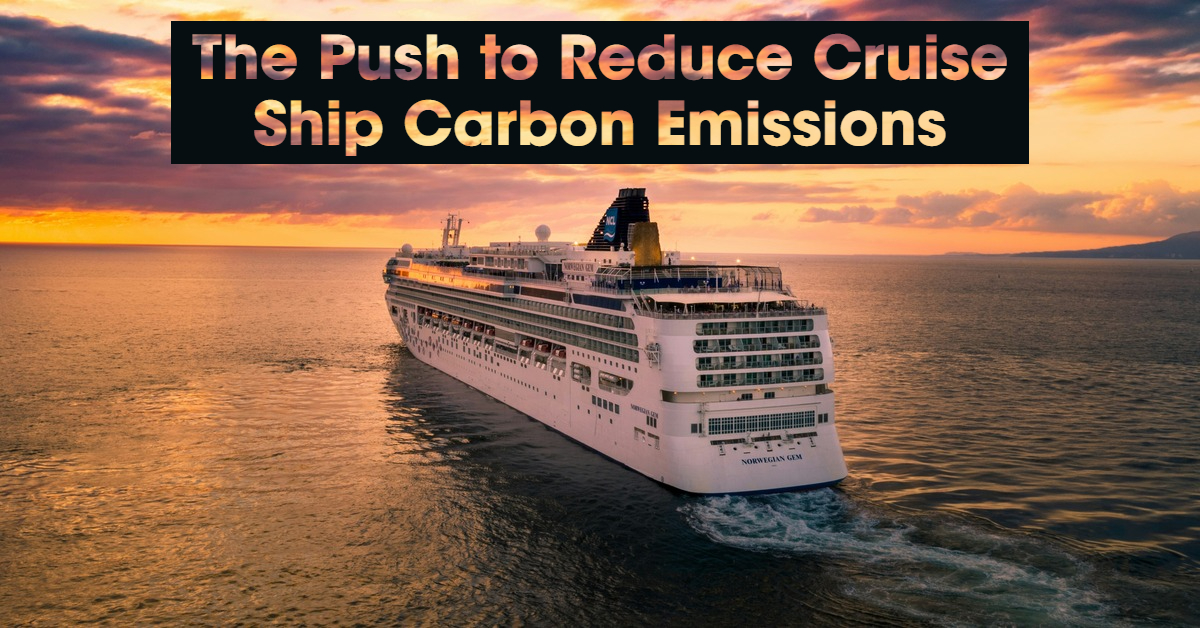
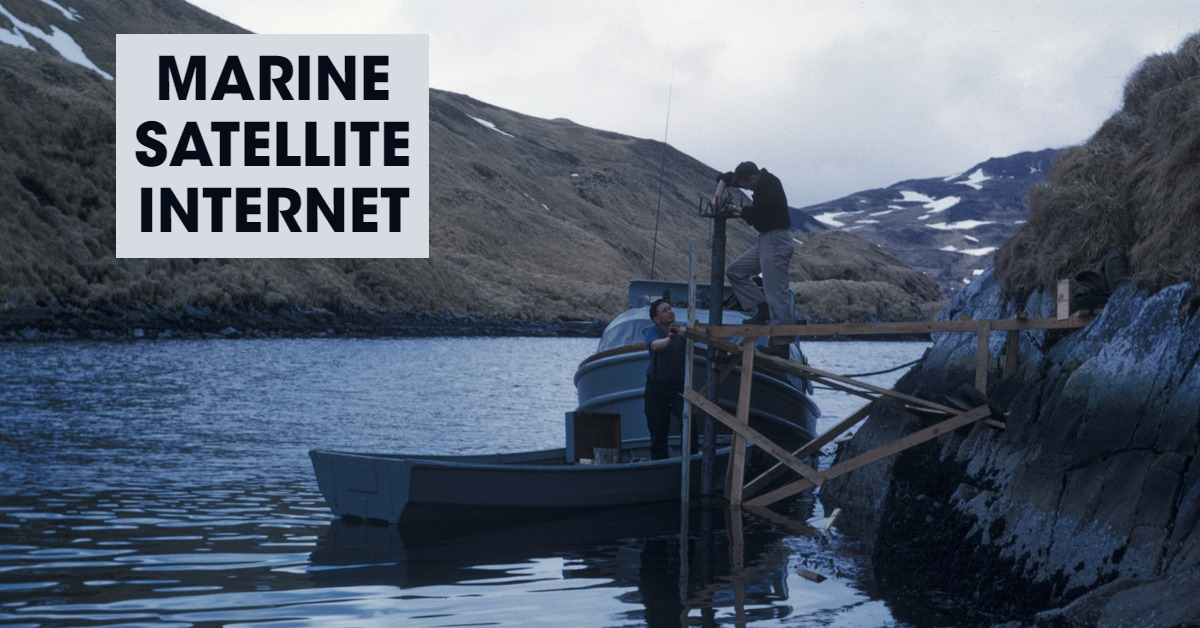
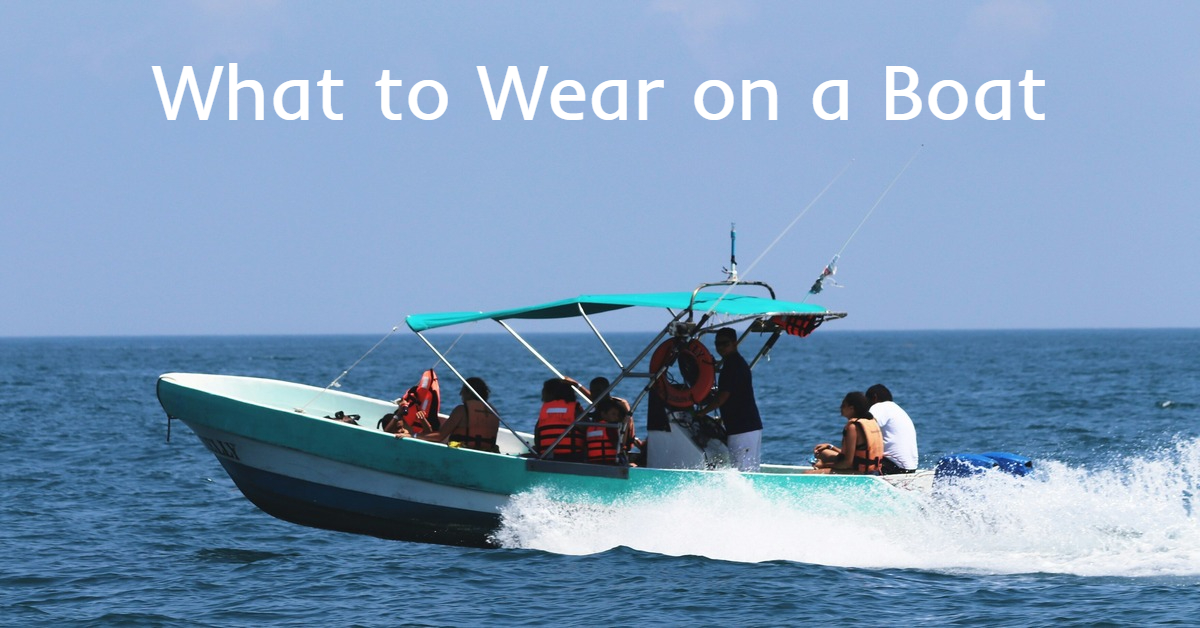
Leave a Reply